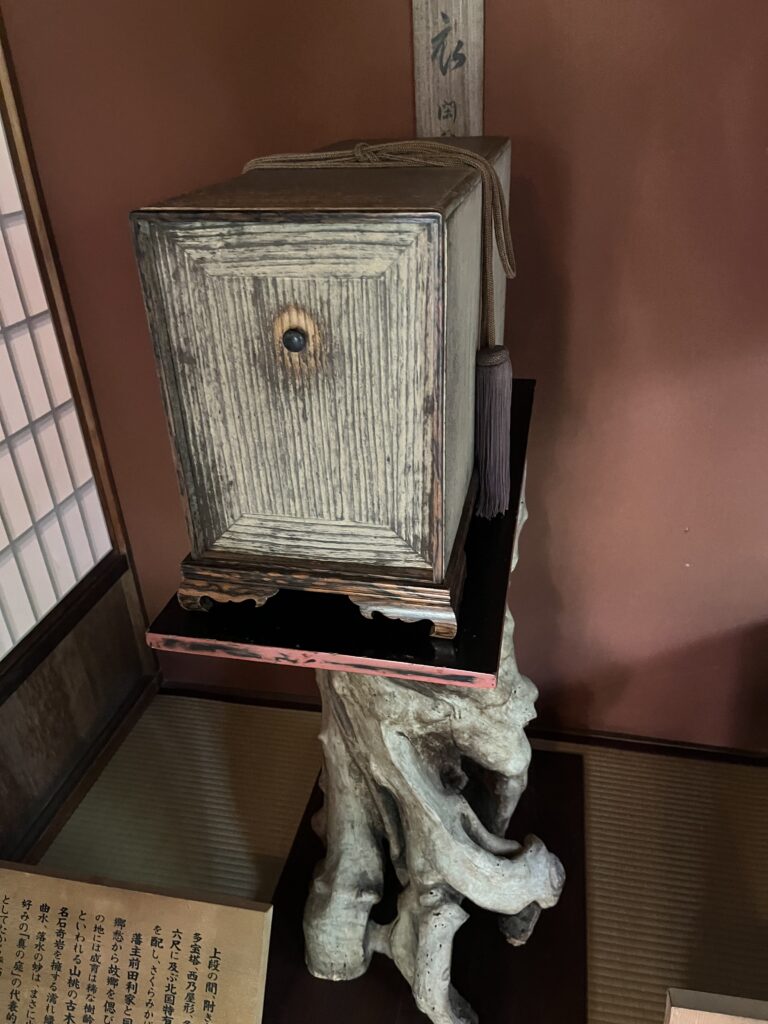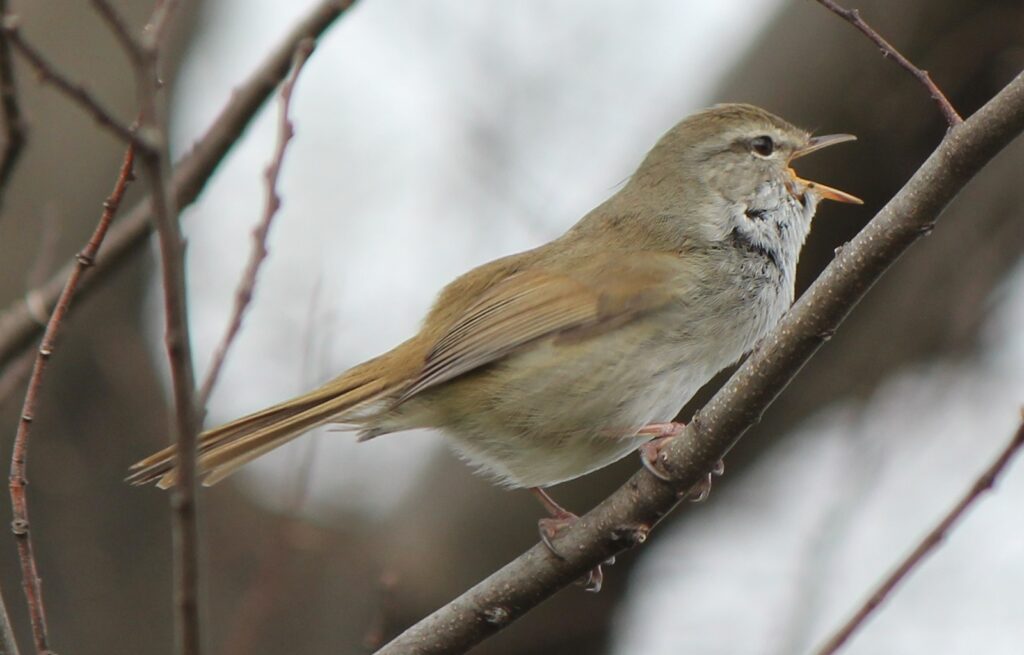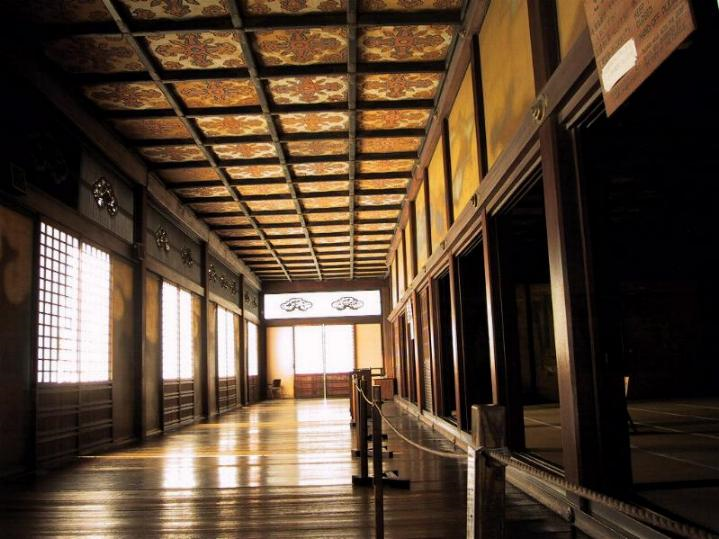
The English name “nightingale” refers to the Japanese Bush Warbler, a common songbird in Japan. The singing of the bush warbler has encouraged the keeping of these birds as caged birds in homes. To encourage singing the cages of birds were covered with a wooden box with a small paper window that allowed only subdued light in. (Honestly, I don’t know how restricting light entering the box would encourage singing.) The bird had another use, though. The bush warbler’s droppings, Uguisu no fun, contain an enzyme that has been used for a long time as a skin whitening agent, to remove dye from fabric, and to remove fine wrinkles. It is sometimes sold as “uguisu powder”. The droppings are also used to remove stains from kimono. There is only one place today in Japan where you can still buy nightingale feces like geishas did many years ago. Apparently Tom Cruise uses the stuff to maintain his youthful appearance.

Both male and female Japanese Bush Warblers are olive-brown on the upper parts and beige on the underparts. They have creamy superciliaries. The coloration varies slightly between the subspecies or the local populations. Japanese Bush Warblers are distributed in northeastern China, the Russian Far East, the Korean Peninsula and Japan. They prefer bushes at a forest edge and in an open area of a forest from a montane belt to a subalpine zone, though they are widely distributed in a dense thicket of bamboo grass and bushes They were introduced into Hawaii in the early 1900’s for insect control, the only non-native location they inhabit.
It is one of Japan’s songbirds, and is also called the “haruen-dori” because of its call “Hohokekyo”. When it chirps, it stretches its neck to make its voice echo, giving it the English name of “Bush Warbler”. The day when the warbler chirps are heard for the first time in the year is called the “first chirping day” and is used to designate the coming of spring along with cherry blossoms and swallows. Horornis diphone, its scientific name, means “dusty bird with two voices” an apparent reference to its dull coloration and two-part song, a long tone followed by a warble.

In many castles, temples, and palaces, such as the Nijō Castle, in Kyoto, Japan, floors were installed in the hallways that made a chirping sound when walked upon, supposedly sounding like a nightingale, giving them the name “nightingale floors.” The hallway floors were built in such a way that the nails used to construct the floor rubbed against a metal clamp, making chirping noises. An information sign in Nijō castle states that “The singing sound is not actually intentional, stemming rather from the movement of nails against clumps in the floor caused by wear and tear over the years”. But legend has it that the squeaking floors were security devices to warn of intruders. The legend continues, stating that friendly visitors would know how to walk on the floors so as to produce a recognizable “friendly” chirp.
I